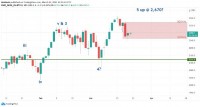|
Here Come Sophisticated Commodity Indexes United States Commodity Funds LLC is best known for its oil fund, among the earliest exchange-traded commodity funds offered in the United States. Last year the firm launched the diversified US Commodity Index Fund. Industry analysts voted this product and its underlying benchmark, the SummerHaven Dynamic Commodity Index Total Return, the most innovative ETF and index of the year. Why is this index innovative? What does the growing sophistication of commodity indexes mean for investors and for managed futures? We asked John Hyland, chief investment officer at United States Commodity Funds. He's been with the firm since 2005. The oil fund started operations in 2006. USCI fund started in August 2010 and returned about 41% since inception (through March). The firm has other funds as well and around $5 billion in assets. See Top Ten for USCI and other diversified commodity fund market caps.
"I don't know if the number of commodity ETFs will double in the next few years but I expect assets under management will double or quadruple outside the gold space." Opalesque Futures Intelligence: How do you deal with the problems of commodity index investments, in particular the built-in losses from rolling the contracts in contango markets? John Hyland: There are three generations of commodity indexes, with large differences in design and long-term results. S&P GSCI exemplifies the first generation of indexes, which have three features. One, they assign static weights to each commodity; two, the weights are based on a criterion other than producing a desirable investment outcome; and three, they only buy contracts in the front or second month, meaning they get the maximum impact of contango and backwardation. The second generation of commodity indexes came out about five years ago. They share the first two attributes of the older indexes but differ in investing their holdings away from the front or second month contract, particularly when a commodity is in contango. This one simple change allows second generation indexes to outperform the older indexes by 5%-plus a year.
OFI: What differentiates the third generation? JH: The third generation, which came out in 2009, also play the futures curve like the second generation, but add rules-based methodologies to adjust the mix and weightings of commodities. This type of index may lower the weight or even assign zero weight to a commodity that is badly in contango or displays some other trend suggesting it is not going to perform strongly. Third generation indexes outperform the first generation by as much as 10% a year or better. We're talking serious money! OFI: Is this active management? JH: No, this is not active management. I prefer to
describe the third generation as dynamic indexes, in that they can change which
commodity to hold, the weighting, and where on the curve to buy the contracts,
according to a set of rules. JH: Dynamic index returns are not alpha, but the
funny thing about the commodity world is that there really is no such thing as
just simple beta. While every large-cap stock index produces pretty much the
same result, every commodity index produces a very different result depending on
their weighting scheme and where on the curve they buy their contracts. Each one
is beta, but not all betas are created equally. The newer versions could be
called "enhanced beta". JH: The index, built by Yale professors Gorton and Rouwenhorst, is from SummerHaven. It comes with quantitative algorithms that every month pick the best 14 commodity futures contracts out of a universe of 27, based on ranking for backwardation and other criteria. This does not mean that you can't have a down year, but it is a better mousetrap. We're the first, but in a year there may be half a dozen such index products.
OFI: Like the early indexes, third generation indexes are long-only. When commodities go down, as they did in recent weeks, don't all indexes follow suit? JH: If you believe commodity prices will go down for the next 12 months, then yes, commodity index investments won't do well. Third-generation versions will do better than the GSCI, but that may mean we're flat while GSCI makes a loss. But how do we know that your belief will turn out to be correct? It is entirely possible that commodity prices will go up over the next 12 months. OFI: CTAs can go short, protecting against down phases of commodity cycles. Won't CTAs always have this advantage over indexes? JH: Probably long/short or long/flat commodity indexes are the next wave. Long/flat indexes have the flexibility to go to cash-by contrast, third generation indexes stay 100% invested by changing the weights to reduce exposure to the commodities that are not promising. For the investor, long/short is a different animal from getting the best commodity exposure you can get because you believe commodities will be in a sustained bullish phase. If you go for long/short, you're saying you are interested in the manager's ability, not in your exposure to commodities.
OFI: What does the availability of enhanced beta in
ETFs mean for managed futures? OFI: What are the advantages and disadvantages of
using second or third generation commodity ETFs compared to CTAs?
OFI: Will commodity ETFs continue to grow?
OFI: What comes next? |
|
This article was published in Opalesque Futures Intelligence.
|





 RSS
RSS










